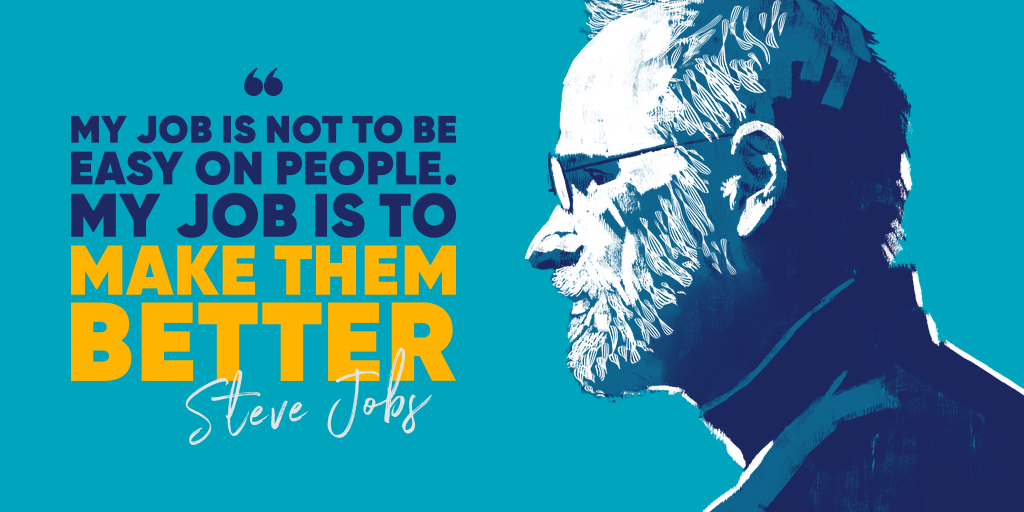Insight article

Inspirational leadership storytelling techniques Steve Jobs built Apple’s success on
Steve Jobs, the co-founder of Apple Inc., was not just a visionary in the world of technology; he was also a masterful storyteller. His ability to weave compelling narratives played a pivotal role in inspiring and motivating the people at Apple. Through a combination of captivating speeches, product launches, and a deep understanding of human psychology, Jobs harnessed the power of storytelling to create a company culture that drove innovation and excellence.
A compelling origin story
Apple’s story began in a garage, where Jobs and Steve Wozniak built their first computer. Jobs knew that every great business needed a compelling origin story, and he often shared this humble beginning with employees. He used this narrative to instil a sense of purpose and determination in his workforce, reminding them that Apple was not just a technology company but a symbol of innovation and rebellion against the status quo.
Creating a vision for the future
Jobs had an uncanny ability to paint a vivid picture of the future. He used storytelling to create a compelling vision for Apple, one where technology seamlessly integrated into our lives, transforming the way we work and play. His famous “1984” commercial for the Macintosh is a prime example of his visionary storytelling. By showing an Orwellian dystopia shattered by the introduction of the Macintosh, he not only introduced a product but also a vision of empowerment and freedom.
Making it relatable
Steve Jobs understood that technology could be intimidating. To bridge the gap between complex technology and everyday users, he employed storytelling. During product launches, he would often share anecdotes and real-life scenarios where Apple’s products could improve people’s lives. He made technology relatable by telling stories about how his own experiences shaped his vision for Apple’s products. And this technique continues in Apple’s product launches, with very emotive human stories being used at the start of the latest product event.
Building emotional connections
Jobs realised that people don’t just buy products; they buy into stories and emotions. He was a master at building emotional connections with both employees and customers. When he returned to Apple in 1997, he delivered a speech where he said, “The people who are crazy enough to think they can change the world are the ones who do.” This narrative of challenging the status quo and making a difference resonated deeply with employees, motivating them to push boundaries and achieve greatness.
Resilience through narrative
Apple faced its share of setbacks and failures over the years, but Jobs used these moments to reinforce the narrative of resilience and determination. When he returned to Apple, he often referred to the company’s near-collapse as a valuable learning experience, emphasising the importance of staying true to Apple’s core values.
Inspiring innovation
One of Jobs’ greatest storytelling talents was his ability to inspire innovation. He encouraged employees to think differently and embrace a mindset of innovation. He once said, “Innovation distinguishes between a leader and a follower.” This narrative encouraged Apple’s workforce to constantly seek new ideas and approaches, driving the company’s continued success.
Steve Jobs was not just a tech visionary; he was a master storyteller who used narratives to inspire, motivate, and shape the culture at Apple. He understood that stories have the power to connect people to a shared vision, to make technology relatable, and to foster a culture of innovation. Jobs’ legacy at Apple continues to live on through the company’s dedication to storytelling, a testament to the enduring power of narrative in inspiring employees and a devoted customer base and driving success.




